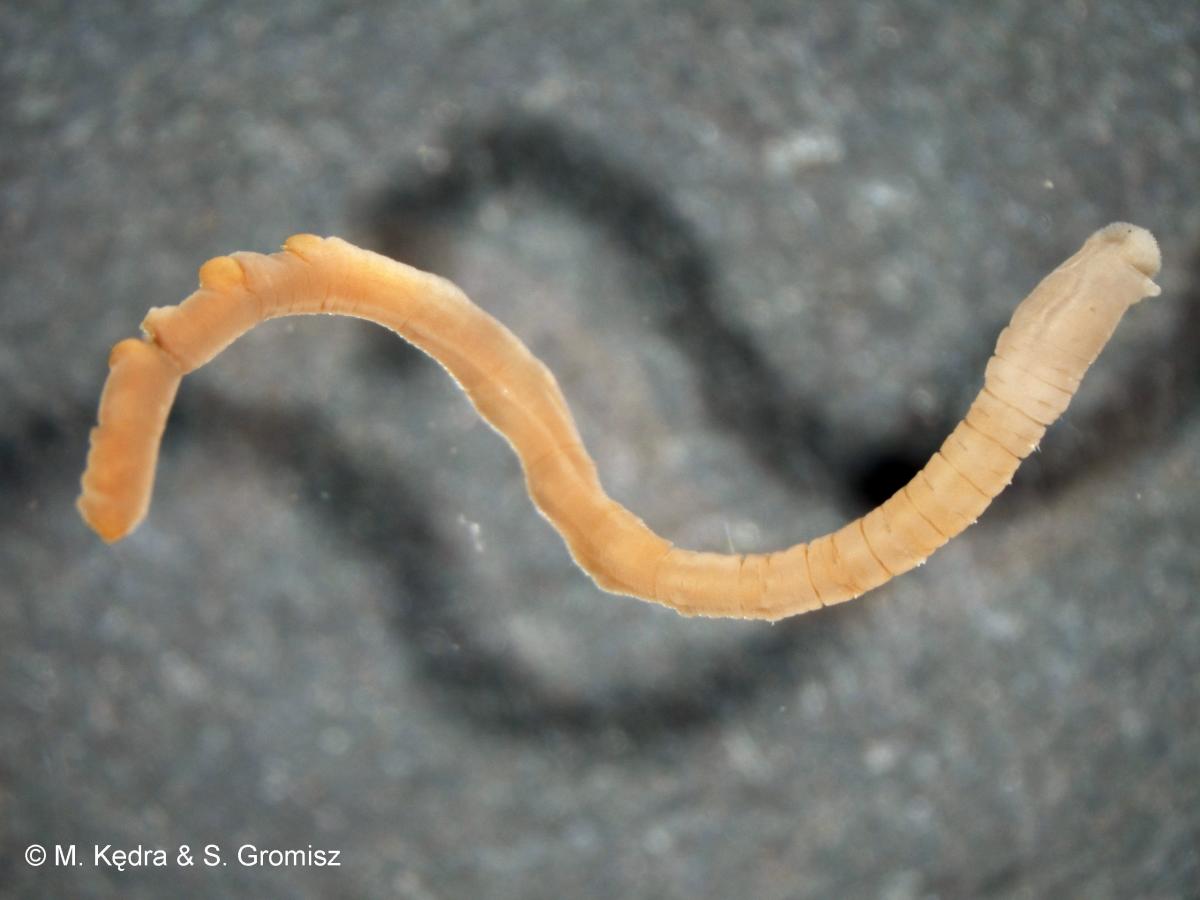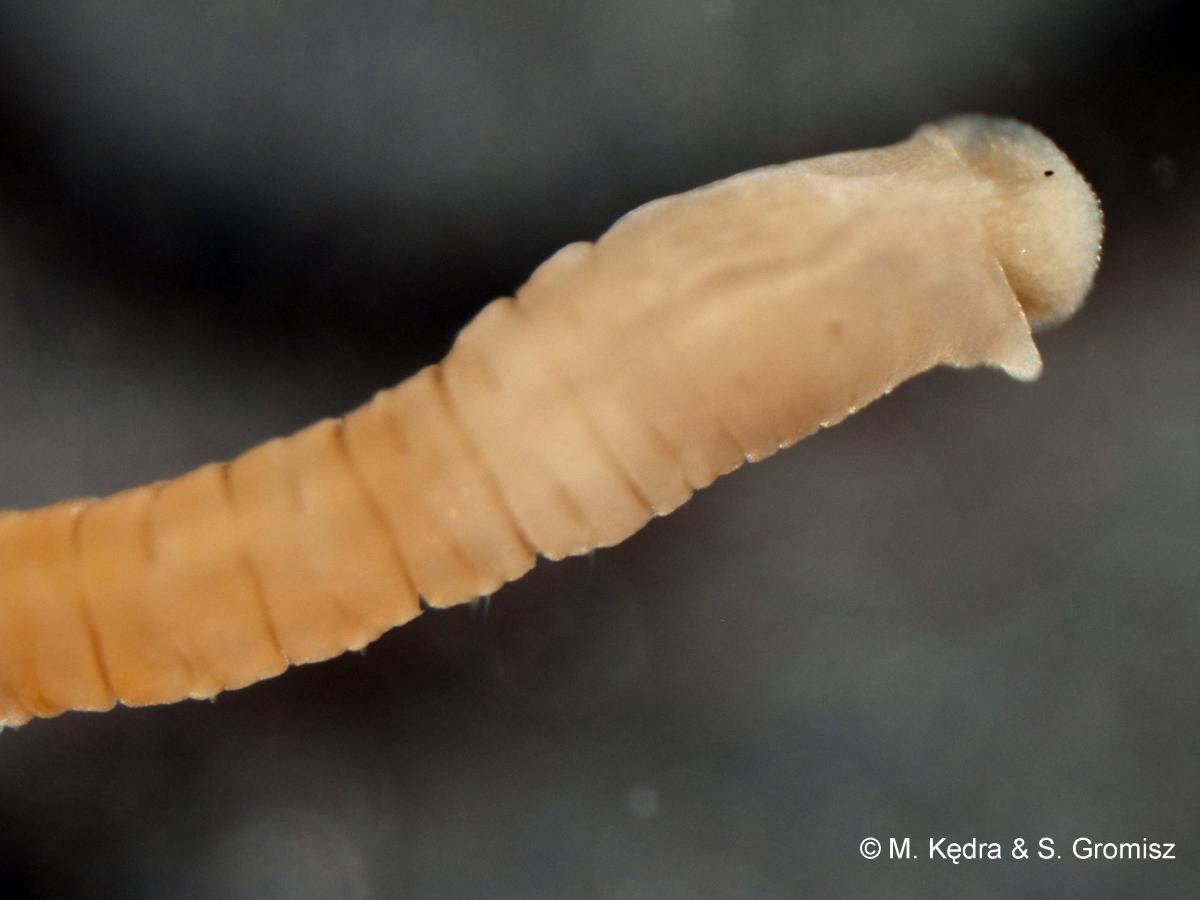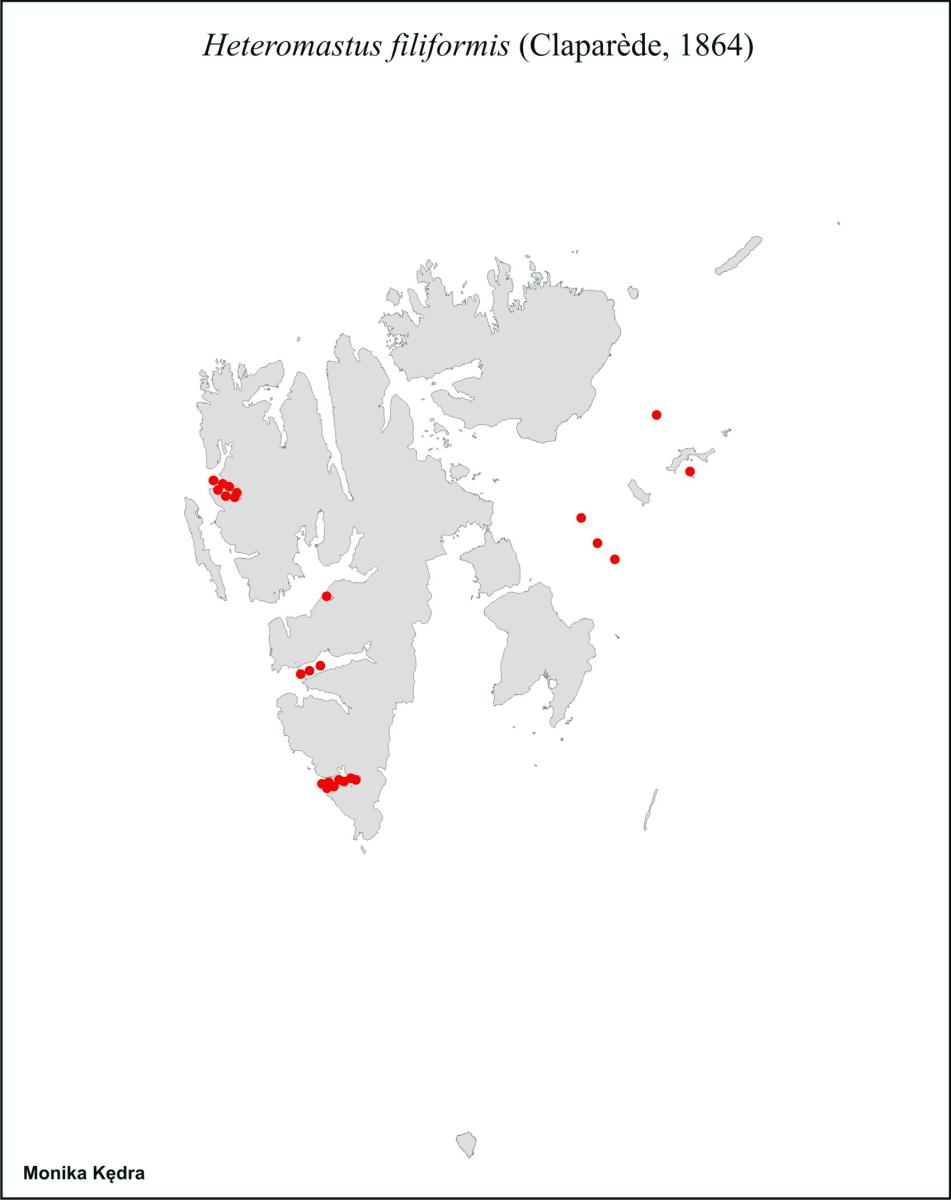Heteromastus filiformis (Claparède, 1864)

|

|

|
Capitella filiformis Claparède,1864
Heteromastus filiformis Eisig, 1887
Distinguishing characteristics
Thorax with 11 chaetigers.
First 5 with capillary chaetae.
Genital hooks absent.
Species description
Body is long, thin, cylindrical, earthworm-like, lacking any appendages, more than 150 segments. Prostomium small, conical, without appendages, can be retracted in peristomium. Thorax with 11 chaetigers. First 5 segments with short, stout capillary chaetae only, the posterior six thoracic segments with hooded hooked chaetae dorsally and ventrally. Abdominal segments at first long, cylindrical and biannulate, then shorter and rounded, finally bell-shaped. Genital hooks absent. Pygidium with one anal cirrus.
Size
Up to 180 mm long and maximal 1 mm wide, for more than 150 segments.
Color
Anterior body red; posterior body yellowish or reddish-green.
Habitat
Lives in branching burrows, supported by mucus. Produces wormcasts on the surface of the bottom. From upper eulittoral down to lower abyssal (4680 m). Favours muddy sand and tolerates pollution and changing salinity grades.
Mobility
Discretely motile.
Feeding
Deposit feeder.
Burrowing head-down feeders.
Life cycle
Free spawning with planktotrophic larvae.
Distribution
Arctic, North Pacific, North Atlantic up to Mediterranean and Black Sea, to the Channel, the whole North Sea, Skagerrak, Kattegat, Öresund to Bornholm Deep in Baltic, Persian Gulf, South Africa, Australia, New Zeeland.

